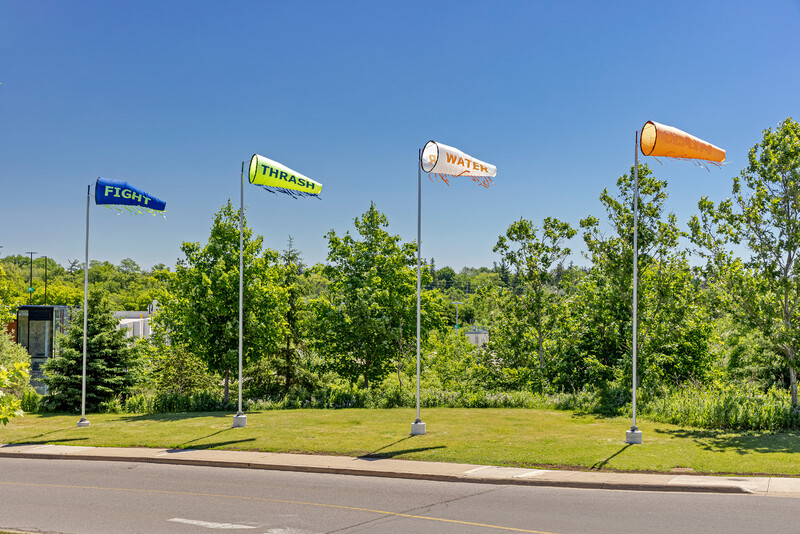
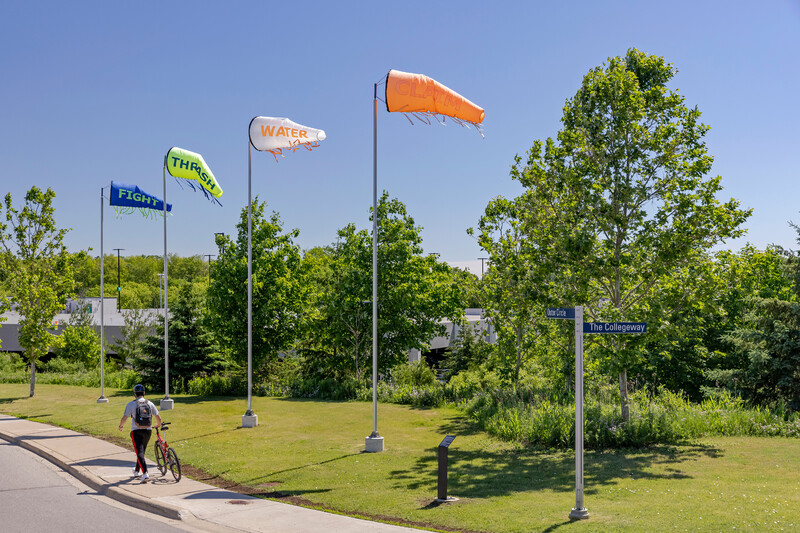
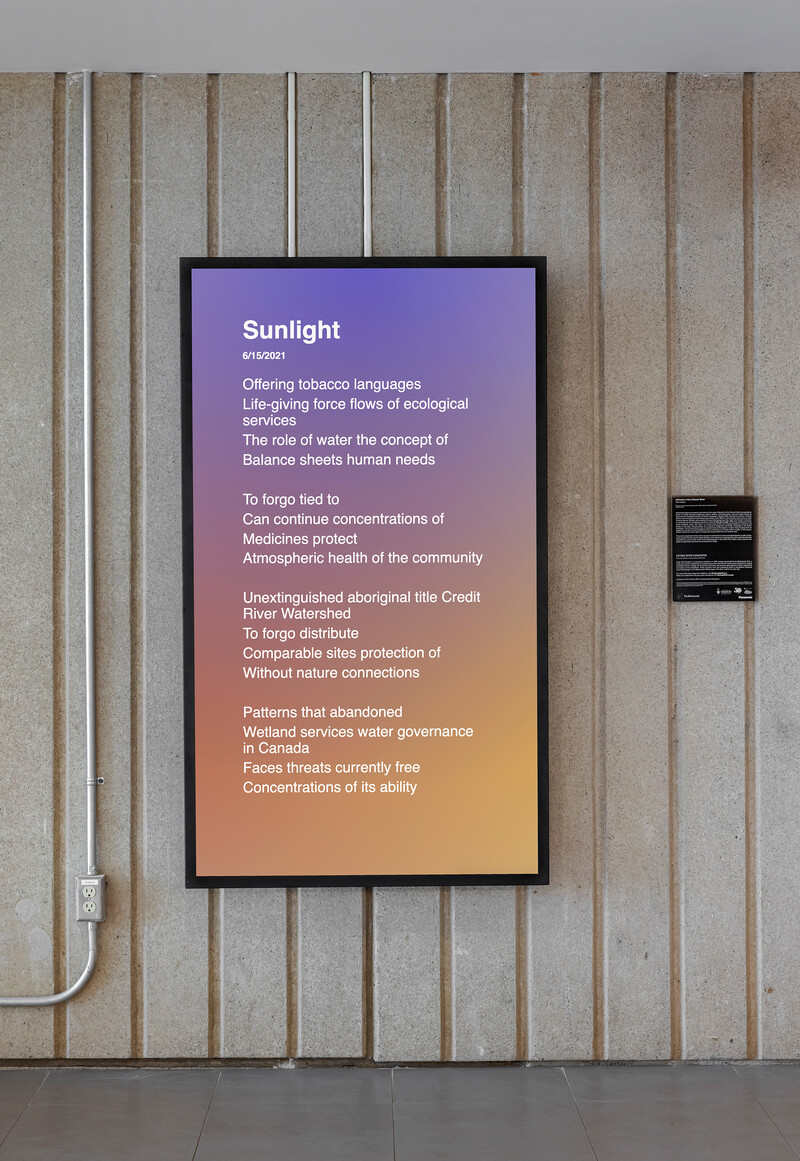
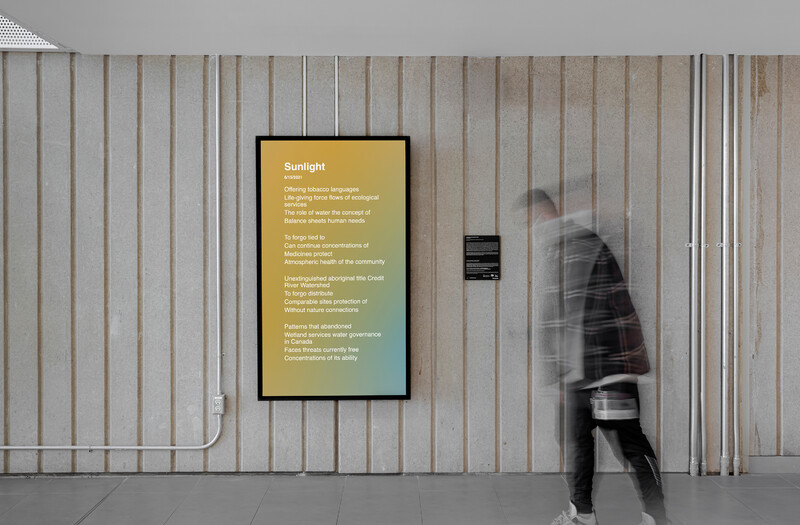
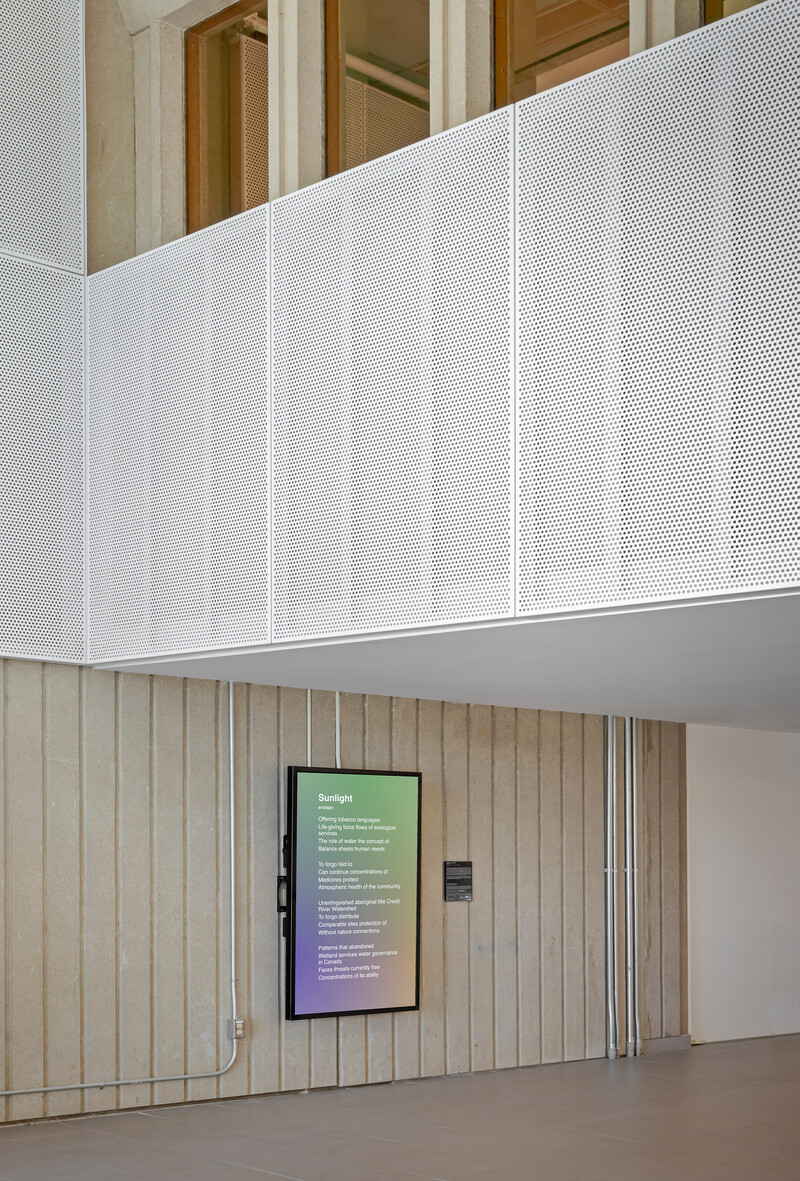
Liberation of the Chinook Wind
Programming and web development by Stephen Surlin.
In Secwépemc territory, Tania Willard’s nation, the Chinook Wind is an animate being that brings news of ancestors, weather, migration, and trade. In this project, Willard evokes the wind’s agency using live wind speed and direction data to generate poems, which update regularly on a screen at the entryway to the Davis Meeting Place, and can be accessed online. The poems use source material reflecting the entangled histories of Chinook Wind, Chinook salmon, and Chinook language (a hybrid of Indigenous and settler languages in the Pacific Northwest which mediated trade and livelihoods in that region).
Willard uses stories of Chinook Wind, salmon, and language to connect to the local territories of the Mississaugas of the Credit. Chinook salmon were introduced to Lake Ontario by settlers in the 1960s for sport fishing, and to prey on other invasive species. Chinook were preferred for sport fishing because they “fight” and “thrash” on the line; on windsocks custom-made windsocks, Willard has emblazoned these words alongside “water” and “claim,” to connect these stories with ongoing Indigenous presence and claims to the water.
Willard’s windsocks affirm Indigenous ways of life and continuing sacred responsibilities in the area, and gesture to ongoing land claims and land defense, including the current water claim by the Mississaugas of the Credit which asserts their rights to waterways that were not surrendered in treaty.
This artwork was first presented offsite at Southdown Industrial Area, Mississauga, for the Blackwood’s 2018 program The Work of Wind: Air, Land, Sea. Southdown is a complex 1.5 sq. km area, bordered by Clarkson to the north and Lake Ontario to the south, featuring an oil and lubricants refinery, a carbon dioxide production facility, a nursery, heritage sites, brownfields, commercial transport hubs, a wastewater treatment plant, a cement plant, a gypsum pier, a rail line, a hazardous waste management facility, fields of phragmites, a fruit distribution centre, an abandoned paint and resin plant, a working hay farm, a radio transmission field, among others. Artworks were presented site-sensitively throughout the industrial area for the 10-day festival.

The Blackwood
University of Toronto Mississauga
3359 Mississauga Road
Mississauga, ON L5L 1C6
[email protected]
(905) 828-3789
The galleries are open. Hours of operation: Monday–Saturday, 12–5pm.
Holiday hours: regular gallery hours are in effect until and including Saturday, December 6. The galleries will then be closed for the holidays, except for regular hours on Saturday, December 13. In 2026, the galleries reopen Monday, January 5.
Facebook | Twitter | Instagram
Sign up to receive our newsletter.
The Blackwood is situated on the Territory of the Mississaugas of the Credit, Seneca, and Huron-Wendat.